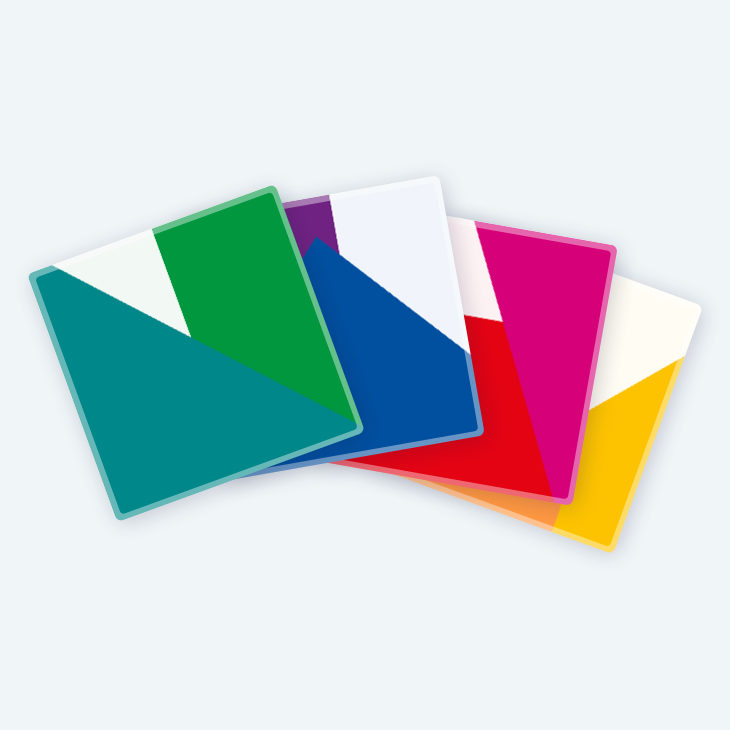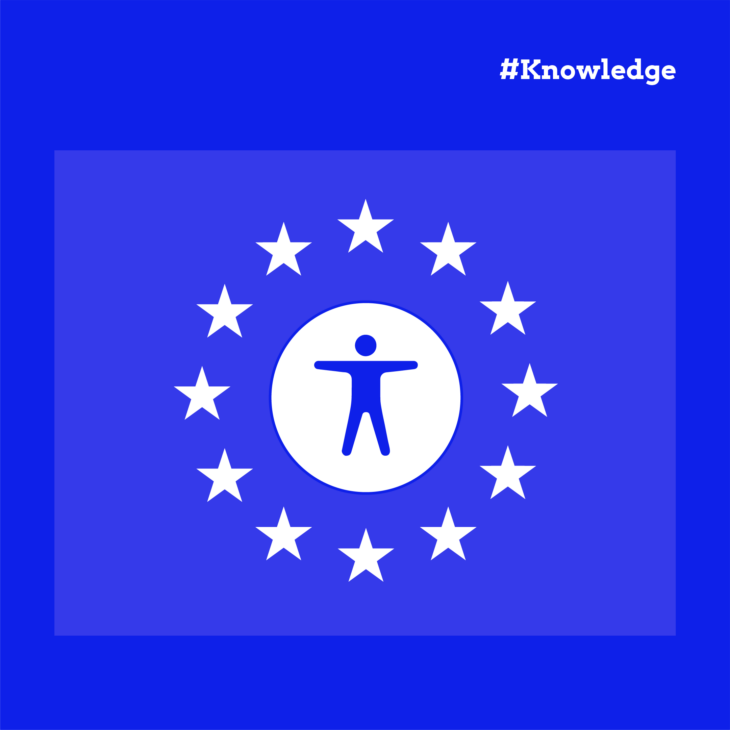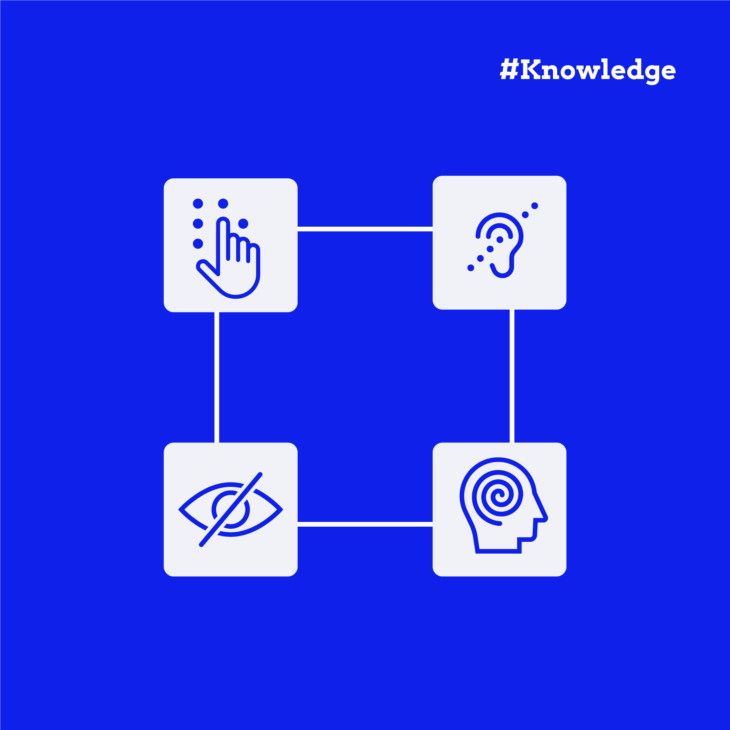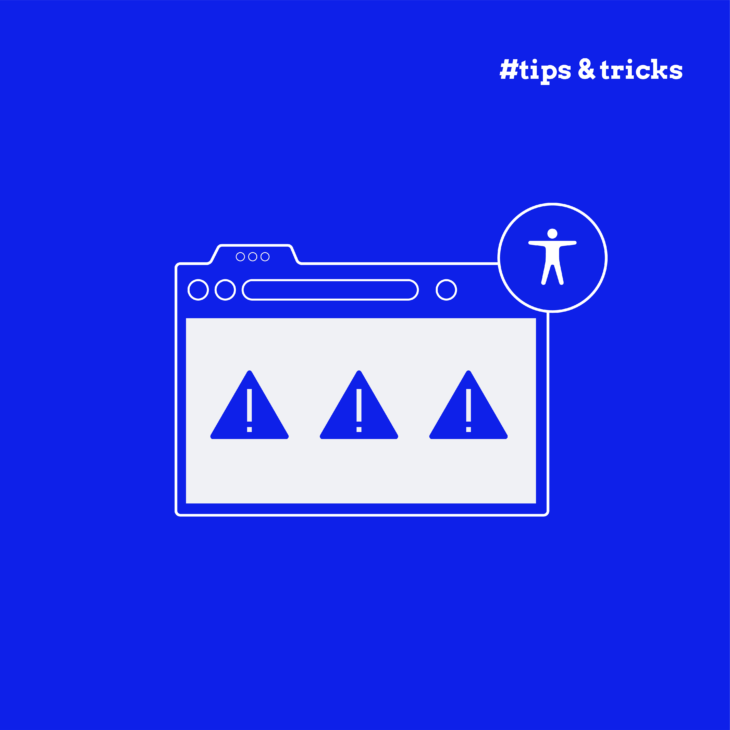Remember how GDPR transformed the way organisations handle data privacy worldwide? EN 301 549 is doing the same for digital accessibility right now.
This European standard sets out accessibility requirements for Information and Communication Technology (ICT) products and services – from websites and software to mobile apps and electronic documents. It’s mandatory for public sector bodies across the EU, and with the European Accessibility Act now in effect since June 2025, private organisations face the same requirements.
Here’s the reality: organisations that haven’t started their accessibility journey are already non-compliant. But there is good news – it’s not too late to catch up.
In this guide, we’ll break down what EN 301 549 actually means for your organisation, how it relates to standards you might already know (like WCAG), and most importantly, practical steps you can take today to achieve compliance and avoid potential penalties.
Let’s dive in.
EN 301 549 explained: The European standard for ICT accessibility
EN 301 549 is a European standard that specifies accessibility requirements for ICT products and services. It was developed by the European Telecommunications Standards Institute (ETSI) in collaboration with CEN (European Committee for Standardization) and CENELEC (European Committee for Electrotechnical Standardization).
🤓 Did you know? EN 301 549 covers much more than just websites – it applies to software, electronic devices, mobile applications, documents, and even telecommunications equipment.
The standard has a unique “self-scoping” nature. This means organisations must determine which requirements apply to their specific products or services. Not every requirement will be relevant to your organisation, but it’s your responsibility to identify which ones are.
Current version and key dates
The latest version is EN 301 549 V3.2.1, published in March 2021. You can download the official standard document (PDF) directly from ETSI.
This version officially supports the Web Accessibility Directive (WAD) since August 2021 through Commission Implementing Decision (EU) 2021/1339. It incorporates WCAG 2.1 Level AA requirements for web content.
EN 301 549 vs the European Accessibility Act
Here’s what many organisations get confused about:
| EN 301 549 | European Accessibility Act (EAA) |
|---|---|
| Technical standard | Legislation |
| Provides specific requirements | Makes requirements legally binding |
| Tells you how to be accessible | Tells you when you must be accessible |
Since June 2025, authorities have been using EN 301 549 to verify compliance with the EAA.
The bottom line: If your product meets EN 301 549 standards, you’re meeting your legal obligations under the EAA.
Critical deadlines and current status
Here’s where we stand now:
- 28 June 2022: The EAA entered into force ✓
- 28 June 2025: Member States began applying the measures ✓
- 2026: EN 301 549 V4.1.1 expected publication.
- 28 June 2030: End of transitional period for existing services.
With the EAA now in effect, organisations that haven’t started their accessibility journey are already behind. The good news? It’s never too late to start, and getting compliant now means avoiding potential penalties whilst opening your products to millions more users.
Benefits of EN 301 549 conformance
When you’re compliant, you avoid tough penalties but also unlock a lot of great opportunities:
- Legal compliance: Meet your obligations under the Web Accessibility Directive and satisfy European Accessibility Act requirements. With enforcement now active, this protects you from potential fines and legal challenges.
- Market access: Public procurement in the EU requires accessibility compliance. Without it, you’re locked out of billions in government contracts.
- Expanded audience reach: Open your products to 87 million Europeans with disabilities – that’s a market larger than the entire population of Germany.
- Improved user experience for everyone: Captions help people in noisy environments, and good contrast helps everyone in bright sunlight.
- Brand reputation: Demonstrate that you’re a responsible and inclusive organisation that values all customers.
Smart organisations recognise that while their competitors scramble to meet minimum requirements, those who have already invested in accessibility expertise – through training like The A11Y Collective’s courses – are free to focus on innovation and growth.
EN 301 549 and WCAG: harmonised standards for digital accessibility
If you’re already familiar with WCAG, here’s some good news – you’re halfway there.
EN 301 549 directly incorporates WCAG 2.1 Level AA requirements in Chapter 9 (Web). Conformance with WCAG 2.1 Level AA is equivalent to meeting clauses 9.1 to 9.4 and the conformance requirements in clause 9.6 of EN 301 549.
Quick note: EN 301 549 V3.2.1 (2021) references WCAG 2.1, but future versions may incorporate WCAG 2.2 requirements.
Where EN 301 549 goes beyond WCAG
WCAG focuses specifically on web content. EN 301 549 covers everything:
- Non-web documents (PDFs, Word files, spreadsheets).
- Software (desktop applications, mobile apps).
- Documentation and support services.
- ICT providing relay or emergency service access.
- Hardware requirements for ICT devices.
Both standards rest on the POUR principles:
Perceivable – Information must be presentable in ways users can perceive.
Operable – Interface components must be operable.
Understandable – Information and UI operation must be understandable.
Robust – Content must work with assistive technologies.
These principles ensure digital content works for people with various disabilities – from hearing and visual impairments to motor and cognitive disabilities.
Level AAA contains additional requirements that benefit users with disabilities but aren’t mandated. Why? They can’t be universally applied to all content types.
Taeke Reijenga. Founder & CEO at Level Level and The A11Y CollectiveOrganisations often underestimate the overlap between EN 301 549 and their existing WCAG efforts – they’re closer to compliance than they think. Solid WCAG knowledge already covers a large percentage of what most digital products need.
Practical steps to achieve EN 301 549 compliance
Getting compliant doesn’t have to be overwhelming. Here’s your step-by-step roadmap:
1. Familiarise yourself with website accessibility standards
Start by understanding what you’re working towards. WCAG 2.1 AA forms the web portion of EN 301 549, but there’s more to know.
First, download the official EN 301 549 V3.2.1 document from ETSI. Yes, it’s 186 pages – but you don’t need to memorise it all.
🧠 Pro tip: Create a checklist of requirements relevant to your specific offerings. Not every requirement applies to every organisation.
Pay special attention to the “functional performance statements” in Chapter 4. These explain why technical requirements exist. Understanding the “why” helps you make better decisions when edge cases arise.
2. Examine your current website and product offerings
Time for an honest assessment. Conduct a gap analysis between your current digital assets and EN 301 549 requirements. This involves systematically comparing your current accessibility status against each applicable requirement. Start with high-traffic pages and critical user journeys, then work outwards. For detailed guidance on conducting accessibility assessments, check out how to perform an accessibility audit. This one is for the Americans with Disabilities Act, but the principle is the same, as it follows WCAG guidelines.
Reality check: The best automated testing tools identify only about 30-40% of potential accessibility problems.
What catches the rest? Manual testing with:
- Screen readers (NVDA, JAWS, VoiceOver).
- Keyboard-only navigation.
- Real people with disabilities.
Relying solely on automatic testing? That’s like checking your spelling but ignoring grammar.
🧠 Pro tip: Document everything in a compliance matrix. This becomes your single source of truth for what needs fixing.
3. Create a remediation roadmap
Now you know what’s broken. Here’s how to fix it systematically:
- Prioritise based on:
- User impact (high-traffic pages first).
- Legal risk (public-facing services).
- Quick wins (easy fixes that help many users).
- Set realistic timelines. Rome wasn’t built in a day, and neither is accessibility compliance.
- Assign clear ownership. “Everyone’s responsibility” often means nobody’s responsibility. Name names.
- Budget properly. Include costs for:
- Developer time.
- Testing tools.
- Training.
- Potential redesigns.
4. Consider an external accessibility audit
Sometimes you need fresh eyes. Third-party expert audits catch issues internal teams miss.
Good auditors don’t just list problems – they provide prioritised remediation recommendations. Even better? Find auditors who include training, so your team learns while fixing issues.
Think of it as hiring a personal trainer. You could figure out fitness alone, but expert guidance gets you there faster and more effectively.
Fast-track your accessibility knowledge with The A11Y Collective
Remember step 1: familiarising yourself with accessibility standards? Here’s how to accelerate that learning curve.
The beauty of learning web accessibility properly is that the knowledge transfers across standards. When you understand why colour contrast matters for WCAG, you understand EN 301 549’s visual presentation requirements. It’s about building that foundational understanding.
The A11Y Collective offers targeted courses for every role in your team:
- Designers learn to create inclusive interfaces from the start.
- Developers master semantic HTML and ARIA implementation.
- Product owners understand how to prioritise accessibility features.
- Content creators discover how to write for everyone.
- Webmasters gain skills to maintain accessible sites.
The best part? Self-paced learning means no disrupted schedules. Your team can upskill during quieter periods or between projects.
These aren’t theoretical lectures. You’ll learn practical techniques for making content work with screen readers, supporting users with cognitive disabilities, and implementing WCAG requirements – the foundation of EN 301 549’s web accessibility rules.
Added bonus: Accessibility knowledge doesn’t just help with compliance. It makes your team better at their jobs overall – Accessible code is cleaner code, and accessible design is clearer design.
Ready to build expertise that lasts? Explore The A11Y Collective’s business-focused accessibility courses and give your team the knowledge they need for sustainable compliance.
Master compliance with our specialised accessibility courses
EN 301 549 compliance starts with understanding accessibility fundamentals. Without this knowledge, you’re building on shaky ground.
The A11Y Collective’s Web accessibility, the basics course provides exactly what teams need to meet EN 301 549 requirements confidently.
Don’t just take our word for it:
Dorothy LeiThis is a thoughtfully designed and well-structured course packed with relevant, insightful content. It provides a solid foundation for understanding key issues, tools, and solutions across different roles – whether you’re a designer, developer, or project manager. The material not only offers theoretical knowledge but also encourages practical application.
From understanding WCAG principles to implementing accessible forms, our courses transform compliance from a challenge into standard practice.
Ready to equip your team with the expertise they need? Discover our bespoke business-focused accessibility courses, designed to make EN 301 549 compliance achievable for organisations of any size.

Ready to master EN 301 549 compliance?
Build essential accessibility knowledge with our foundational course. Learn WCAG principles and practical techniques to meet European accessibility requirements.




